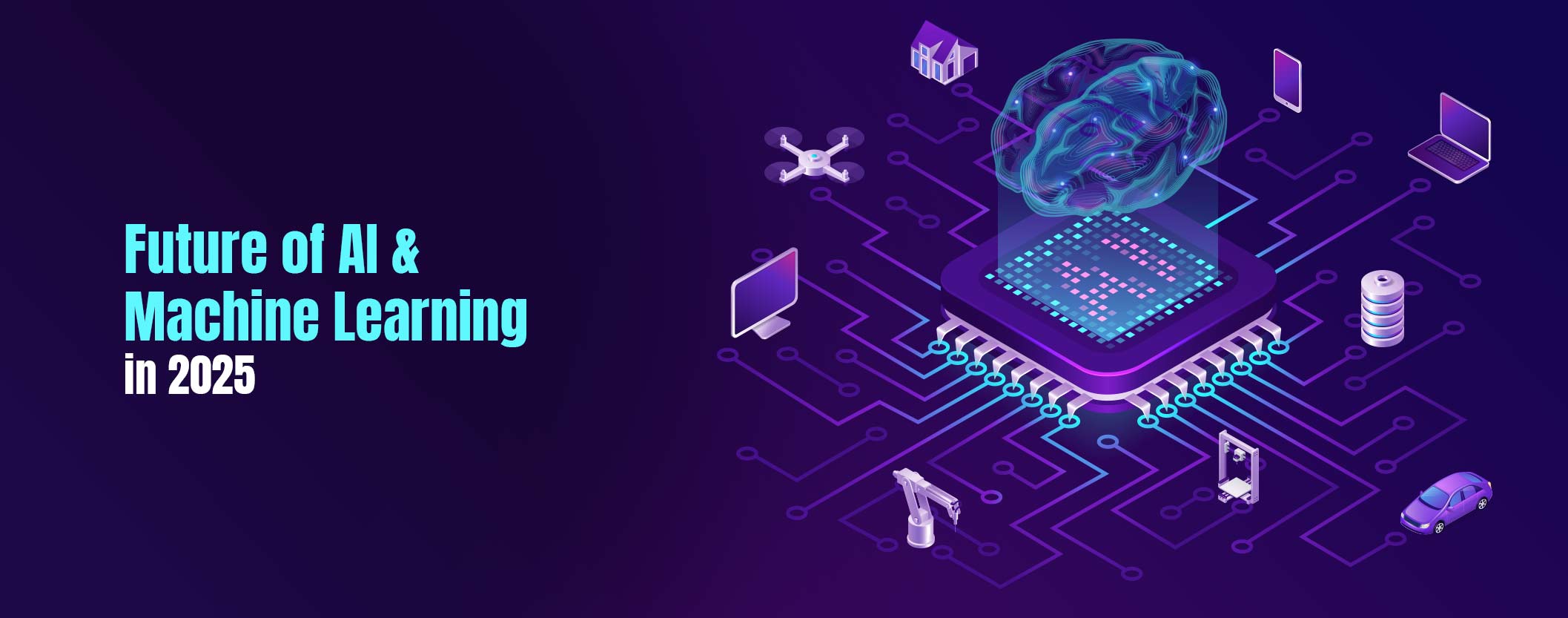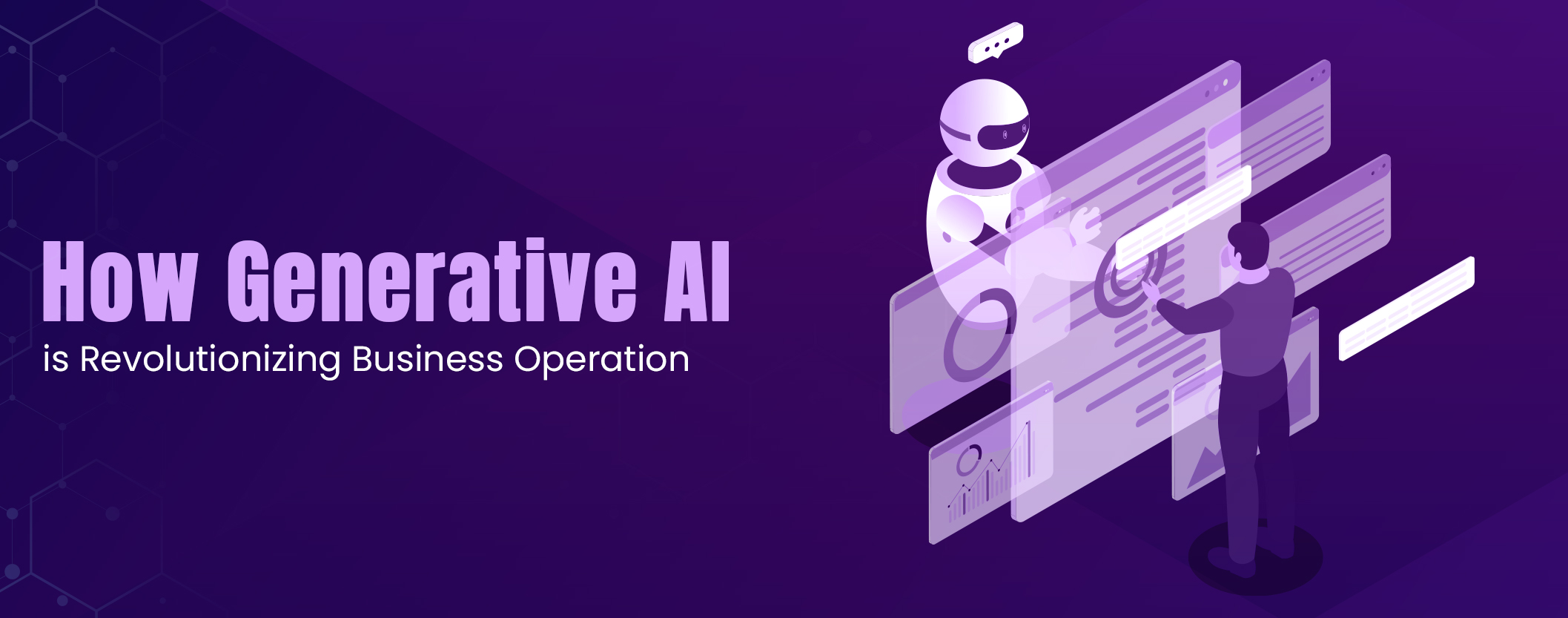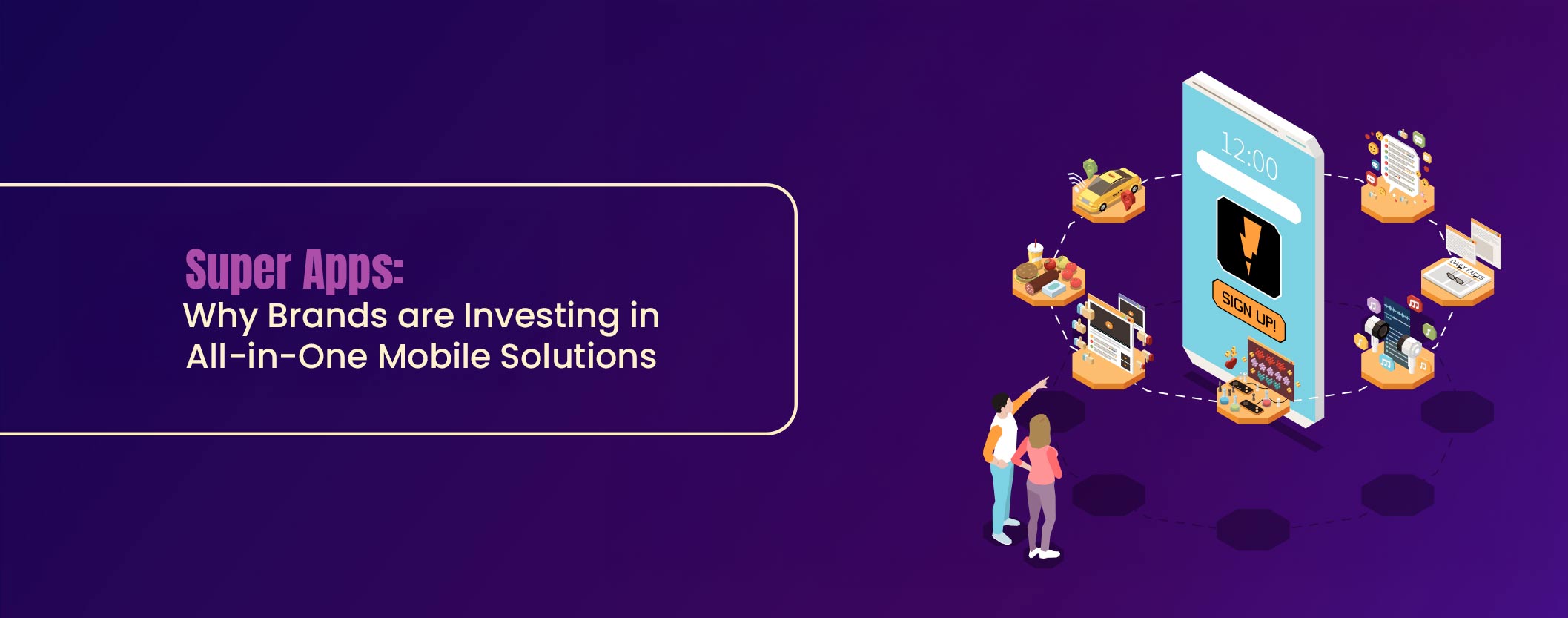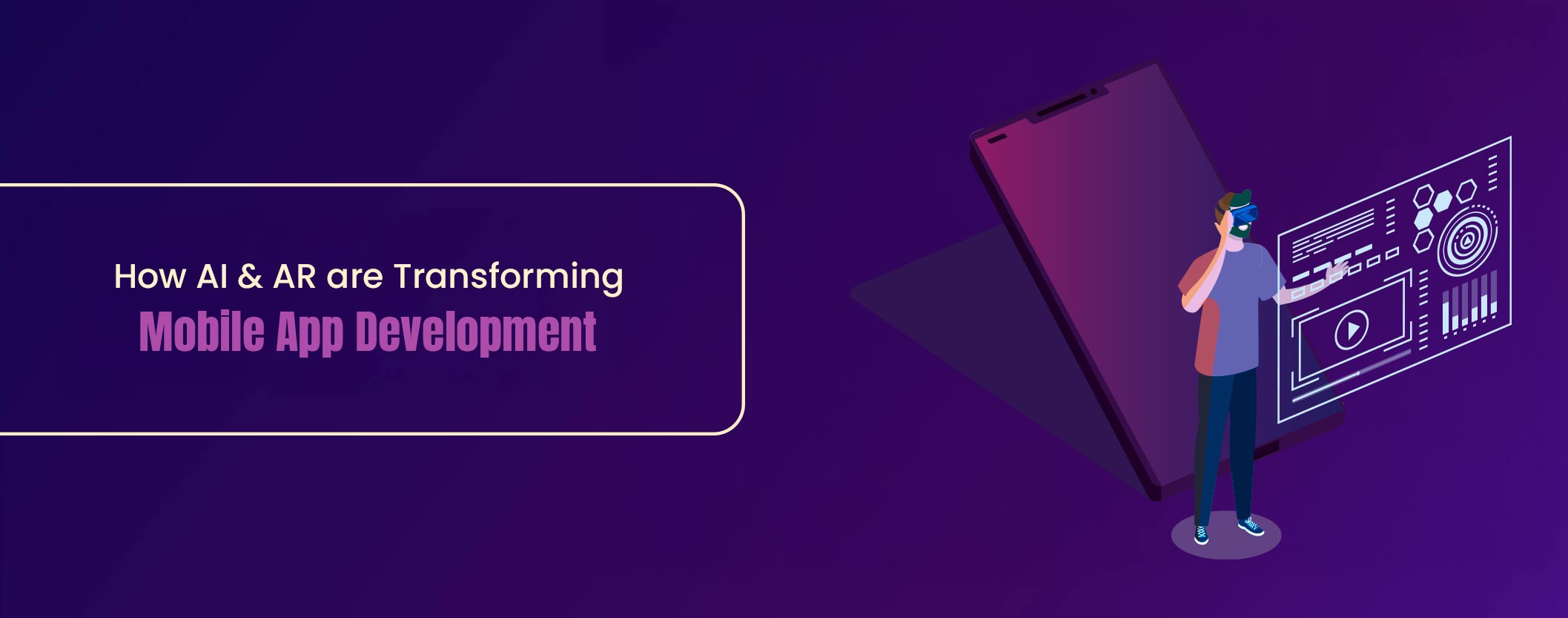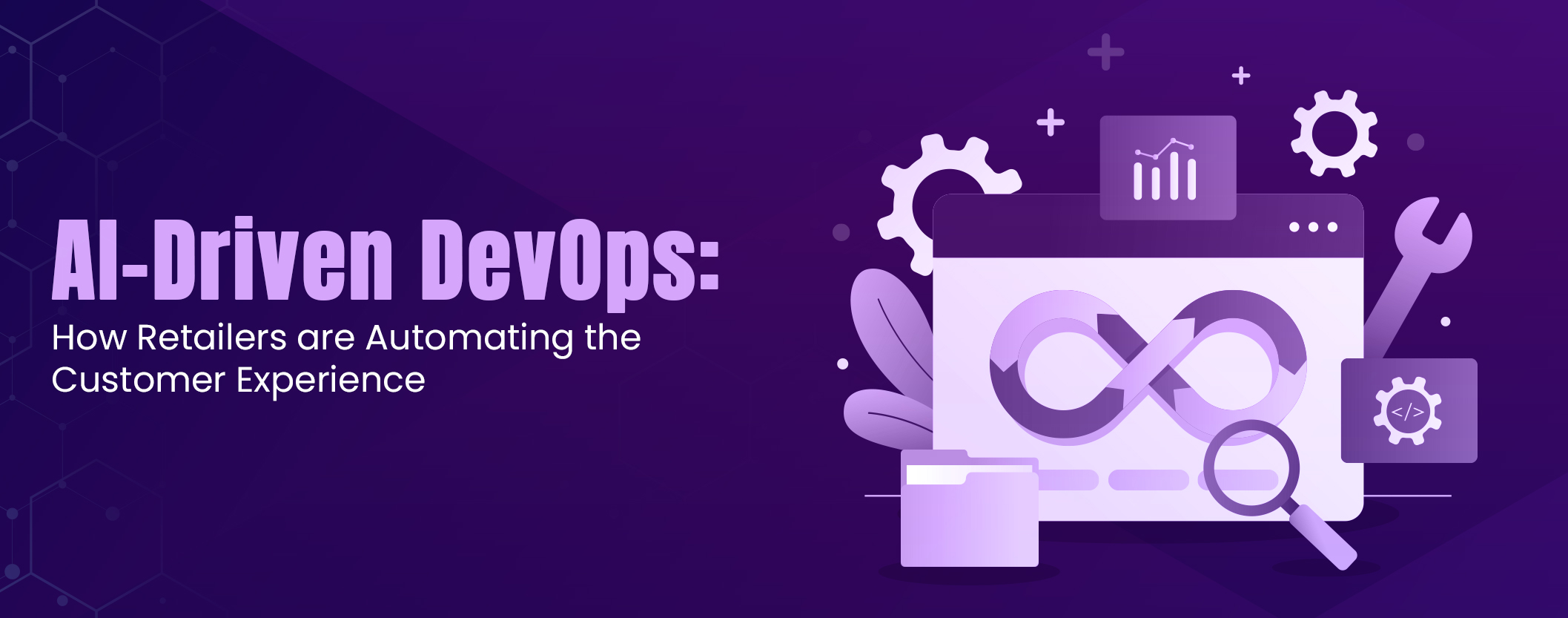As we approach 2025, Artificial intelligence (AI) and machine learning (ML) are driving breakthroughs across sectors—from healthcare and finance to creative arts and education. By 2025, businesses are expected to invest $500 billion in AI, a sign of how these technologies are reshaping industries, transforming how we live and work. Let’s explore the key trends in AI and ML that are expected to shape the coming year. (Source: MarketsandMarkets, “Artificial Intelligence Market by Technology, Software, and Geography – Global Forecast to 2025”)
Key AI and Machine Learning Trends to Watch in 2025
Here are some of the top AI and machine learning trends set to shape the future in 2025:
1. Generative AI Gets Stronger and More Accessible
Generative AI, driven at the forefront by models currently including ChatGPT, DALL-E, and Midjourney, has been changing industries through rapid improvements in creating text, images, and music, plus code generation. By 2025, the generative AI market will surpass $20 billion and become more sophisticated, widely available, and accessible, enabling small businesses and individuals to use it for creative projects, automation, or prototyping. (Source: PwC, “Global Artificial Intelligence Study: Exploiting the AI Revolution”)
What to Watch:
- Generative AI for multimedia experiences.
- Features that enable users to “train” AI on specific styles.
- Responsible AI practices to ensure content is ethical and free of bias.
2. Edge AI Expands for Real-Time Applications
Edge AI runs data processing directly on smartphones and IoT sensors, among other devices, thereby cutting reliance on cloud computing. In 2025, edge AI will grant real-time decision-making to autonomous vehicles, robotics, healthcare, and industrial automation, among others. Currently valued at around $6 billion, the edge AI market is set to double in size by 2025. With the power of 5G and higher-capacity device hardware, edge AI will drive smart cities, smart home devices, and autonomous systems forward with virtually no latency. (Source: Grand View Research, “Edge AI Market Size, Share & Trends Analysis Report By Component”)
What to Watch:
- Edge AI in Autonomous Driving, Wearables, and Smart Homes.
- Improved privacy because data processing on devices reduces cloud dependency.
- Advanced processing power that opens up high-performance AI on mobile hardware.
3. AI-powered healthcare solutions revolutionize patient care
AI will surely change the perspective of health care in terms of greater accuracy in diagnosis, treatment, and follow-up on patients. The healthcare AI market is expected to reach $45.2 billion by 2025, with advancements in NLP, computer vision, and predictive analytics driving its growth. Which will make AI an inseparable tool in hospitals for better efficiency and improved outcomes of the patients. AI medical imaging tools integrated with virtual health assistants will also help professionals in resource-constrained settings. (Source: MarketsandMarkets, “Artificial Intelligence in Healthcare Market”)
What to Watch:
- AI-assisted diagnostics are reaching unprecedented levels of accuracy, enabling the early detection of diseases.
- Surgery performed by robots or with automation, allowing for precision and minimum invasion.
- Telemedicine and AI-conducted virtual care have made access to healthcare possible remotely.
4. AI Governance and Regulation Gather Pace
Ethics, data privacy, and transparency all become key concerns now that AI is becoming integral in everyday life. By 2025, regulatory bodies and companies are expected to spend over $6 billion on AI governance to ensure fairness and reduce bias, particularly in healthcare, law enforcement, and finance. This shift will be pivotal in maintaining public trust as AI infiltrates more regulated industries. (Source: Gartner, “AI Governance Spending”)
What to Watch:
- New regulations around how data should be used, consented, or decided by AI.
- Ethical AI frameworks and auditing practices within organizations.
- Explainable AI-XAI: Explain decisions of the AI model.
5. Reinforcement Learning and Autonomous Systems Grow
The use of reinforcement learning will also increase, especially in autonomous systems where real-time adaptation is necessary. By 2025, experts forecast the RL market for robotics and autonomous vehicles to reach $5 billion as RL-enabled robots take on complex tasks. Additionally, autonomous vehicles, warehouses, and home assistants will use reinforcement learning to enhance functionality and improve user experience. (Source: MarketsandMarkets, “Reinforcement Learning Market by Component, Application, Industry”)
What to Watch:
- Prevalence of autonomous delivery drones and vehicles.
- RL-based industrial robots for applications including packaging and quality control.
- Simulation environments for RL in training AI across domains.
6. Advances in Natural Language Processing for Increased Interoperability
This, with enhancements available for the NLP market is expected to reach $35 billion by 2025, would allow AI to understand and reproduce human language with better clarity, making interactions very intuitive and more human-like. Enhancement to NLP will improve chatbots, virtual assistants, education, mental health support, content moderation, and language translation. (Source: Allied Market Research, “Natural Language Processing Market by Type and End-Use Industry”)
What to Watch:
- Real-time translation to help in the bridging of gaps in communication.
- AI tools that can summarize, create and verify news.
- NLP systems understand context, intent, and emotional nuance.
7. AI-powered sustainability solutions tackle climate change
This is expected to be the year when artificial intelligence and machine learning will emerge to play a major role in helping solve environmental problems like climate change. By 2025, AI applications in sustainability are expected to drive a $10 billion market, focusing on climate action, optimizing energy use, and promoting sustainable practices in agriculture, smart grids, water management, and renewable energy—all of which will help industries reduce their carbon footprint.(Source: Accenture, “AI and the Environment: Making it Work for a Sustainable Future”)
What to Watch:
- Artificial Intelligence models that can predict climate patterns and assist in disaster responses.
- Optimizing alternative renewable sources such as solar and wind.
- AI-powered sustainable agriculture includes precision farming, crop monitoring, etc.
8. Human-Centered AI: It’s time to get better User Experience
Human-Centered AI is the design and implementation of the system that shall cater to human needs and emotions. The user-experience-focused AI market will grow by 25% annually, driving virtual assistants to become more empathetic, enabling adaptive platforms to personalize learning, and helping smart home devices understand user preferences. (Source: Frost & Sullivan, “AI-based Human Experience Innovation Market”)
What to Watch:
- Emotionally intelligent AI that adapts to users’ moods.
- Virtual assistants with richly textured understandings of preferences.
- Educational tools adjusted to individual needs and learning styles.
Conclusion: Embrace the Future with an AI Development Company
AI and machine learning trends in 2025 is filled with promise. From AI & ML in IoT to human-centered designs and sustainability solutions, these technologies are on course to deliver transformative changes. Partnering with an AI development company like Stigasoft can help businesses navigate this evolving landscape and harness AI effectively. However, ethical considerations, regulations, and a commitment to trust will be crucial in ensuring AI benefits all of humanity. Moving forward, the challenge will be balancing innovation with responsibility, making AI a positive force in an evolving world.

